Exhibit Evokes Wood Culture and the Interdependence Between Man and Nature
Handicrafts are an accumulated global heritage
2013/12/17 | By Michelle HsuTsung-Yeh International Exhibition of Wooden Artifacts 2013
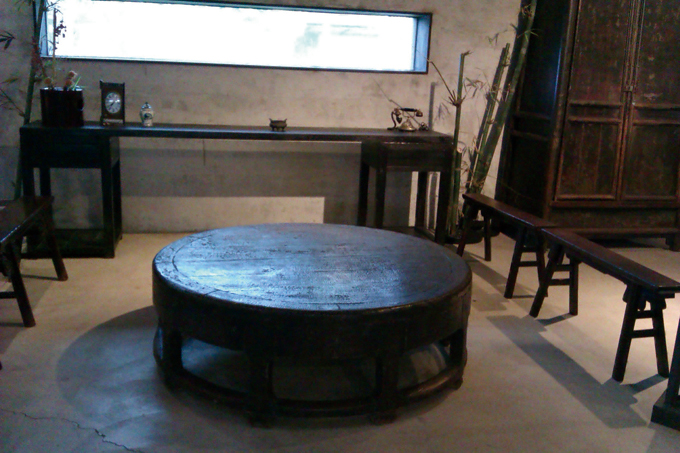
This year the exhibition was expanded, with a series of activities being organized around the theme of “Gazing into the Past and Looking to the Future.” The activities include six separate thematic woodcraft shows and six professional lectures; they are running three months, until Dec. 1.
The exhibit covers a broad range of wooden artifacts and is a major event for the Greater Tainan area. Co-organizers include the Taiwan Furniture Industry Association (TFPA), the Furniture Manufacturing Eco-Museum in Tainan, and around 20 other institutions and schools. On display are the artifacts of 92 creators of wooden art from eight countries, including Taiwan, Denmark, Japan, Kenya, and Tanzania. Apart from promoting Taiwanese woodcraft culture, the show is also designed to expand international horizons and enhance cultural exchange.
The organizers point out that handicrafts around the world are an accumulated heritage, and in addition to the displays this year's activities include six lectures by masters who have been invited to share their knowledge of the origins and special characteristics of Taiwanese and international furniture.
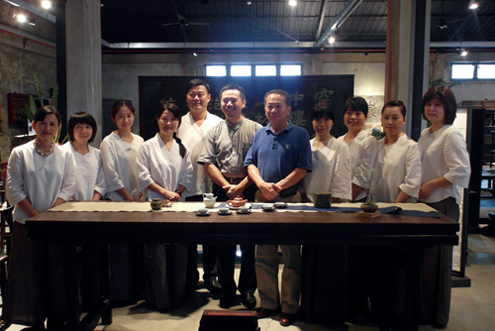
The exhibition is actually made up of six separate shows, two of which are being held at the Furniture Manufacturing Eco-Museum in Tainan. One of them, the Ming and Qing Antique Furniture Show, displays 400 years of rarely seen dynastic pieces, all collected over the past 30-plus years by Lin Ming-san. Through his business dealings, Lin, who was originally engaged in the iron railing and wooden building materials trade, came to know a number of foreign experts who had studied Chinese antique furniture. They inspired him to dive into the field of Chinese antique furniture, and he became one of the top collectors of Chinese antique furniture in Taiwan today.
Lin's collection is comprised mostly of purchases made in mainland China since 1990, the pieces being shipped to Taiwan after restoration by local antique furniture restorers.
Antique furniture is an exacting area of professional expertise, and Lin says that many foreigners have a more in-depth understanding of Chinese antique furniture than do ethnic Chinese--a fact that helped arouse his own determination to study it.
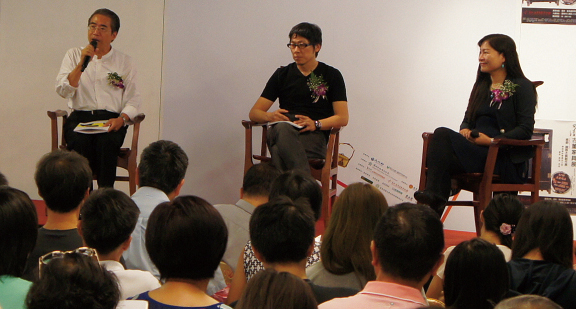
The Furniture Manufacturing Eco-Museum emphasizes that the antique furniture on display can be considered Chinese heirlooms that encourage today's people, even as they pursue creative woodcraft, to look back at how the wisdom of the ancestral Chinese has illuminated the world through the ages.
This assertion was actually made by a Japanese expert, who pointed out that numerous kinds of modern furniture on the market today, whether Scandinavian-style, Japanese-style, bamboo or wood, metal, or upholstered, can ultimately be traced back to three basic models of Ming-style furniture: the rounded chair, the lantern-hanging chair with four protruding parts, and the southern official's “hat” chair. This reflects the timelessness of Chinese antique furniture.
Taiwanese Style
To complement the exhibition, the organizers arranged a special lecture on "Evolution of the Form and Style of Ming and Qing Furniture, and Its Relationship to the Development of Early Taiwanese Furniture.” The speaker was Chen Yong-cheng, a furniture researcher at the National History Museum, who said, “Ming-style furniture design focuses attention on the lines, exemplifying an uncomplicated and refined style and bringing out the tranquil minimalist aspect of Chinese culture.”
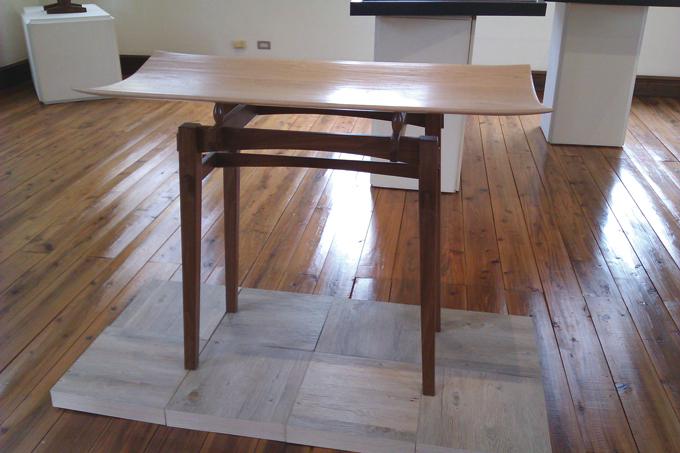
“The Taiwanese style of woodcraft furniture is not something that appeared from nowhere, but is something whose existence has a history,” said TFPA Chairman Lu Yuan-hua in a lecture entitled, “Origins, Development and Handicraft Creations of Taiwan Furniture.”
It is obvious from its appearance that Taiwanese furniture has inherited traditional Chinese styles. But Taiwan has a multi-cultural background, Lu pointed out, and Taiwanese furniture made in later periods is infused with the spirit of Japanese craftsmanship as well as the Western styles of the Dutch and Japanese colonial periods. Then, Lu observed, “During its period as an export-oriented industry, Taiwanese furniture gradually developed its own diverse styles.”
Rookie Works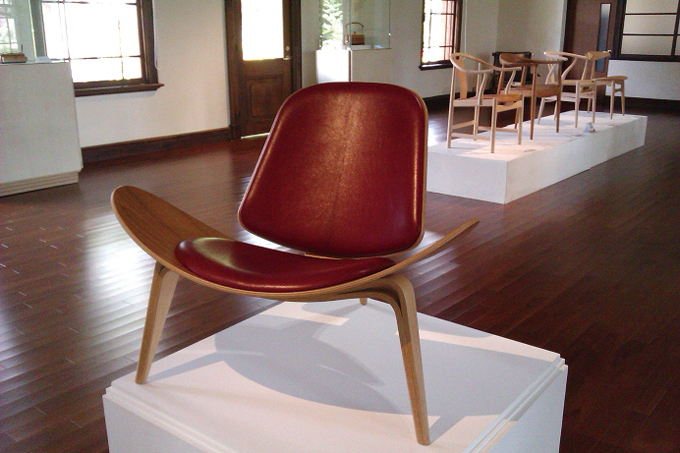
Students at the school use their craftsmanship to bring out the creative beauty of locally cultivated timber. They personally experience contact with the raw wood used in the creative process, and develop furniture products with a fresh new style.
The works produced by the Yung Shing Craft School, displayed on the second floor of the Tsung-Yeh Arts and Cultural Center's Red-brick Building, use different methods to achieve the same exquisite results. Yung Shing is another carpentry school in the southern Taiwan city of Tainan, and its students are mostly amateur woodcraft workers. Despite their amateur status the students are keen to learn, and their works are richly creative. One of those works, for example, is a cabinet made to resemble an early television set. It features aesthetic and innovative qualities along with its practical value as a storage cabinet.
Another piece is a cabinet made from panes of frail wood, with cavities caused by decay forming a natural decorative pattern and improving ventilation in the cabinet at the same time. This can be described as truly ingenious. The “Entrance Table” made by Sun Jeng-fa has a surface made of a thin maple sheet and legs of walnut.
Creative Whimsy
Other shows taking place at the Tsung-Yeh Arts and Cultural Center also display the works of beginners; the National Taiwan Craft Research and Development Institute (NTCRDI), for instance, is displaying works produced by students during a year of learning. Much of this work breaks away from tradition, and creative whimsy is its dominant feature. For example, a lampshade made of cracked wood casts a tranquil light, presenting its own unique style. A low stool constructed of nothing but three planks presents the aesthetics of simplicity.
The “Exhibition of Classic Works of Denmark, Japan and Taiwan” displays a number of Danish classic chairs. HDG founder Lin Dong-yang remarked that the key to the success of Danish furniture lies in its ability to combine the creativity of designers with the excellent technical skills of craftsmen; the two complement each other, and act to assist and complete each other. This is true regardless of whether the furniture in question is handmade or mass produced by machine. Lin describes “successful” furniture as furniture that possesses both textural feel and durability, creating a sense of intimacy in the user over time.
The works on display at the “International Specialty Works Exhibition” are mostly from the private collection of Hou Wen-pin, CEO of the International Wood Culture Society (IWCS), and take “Wood Art, Wood Enjoyment, and Wood Culture” as their theme. The IWCS is taking part in the Tsung-Yeh Arts and Cultural Center's woodcraft exhibition for the first time this year with the aim of helping more people appreciate the inner qualities and enjoyment of woodwork creation, recognize the value of wood culture, and realize the interdependence that exists between man and the natural environment.




